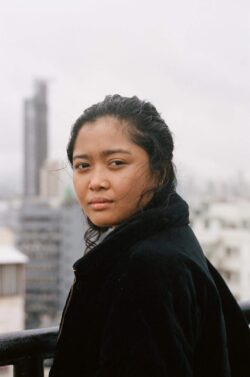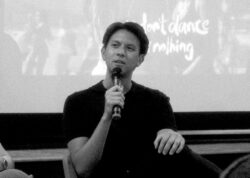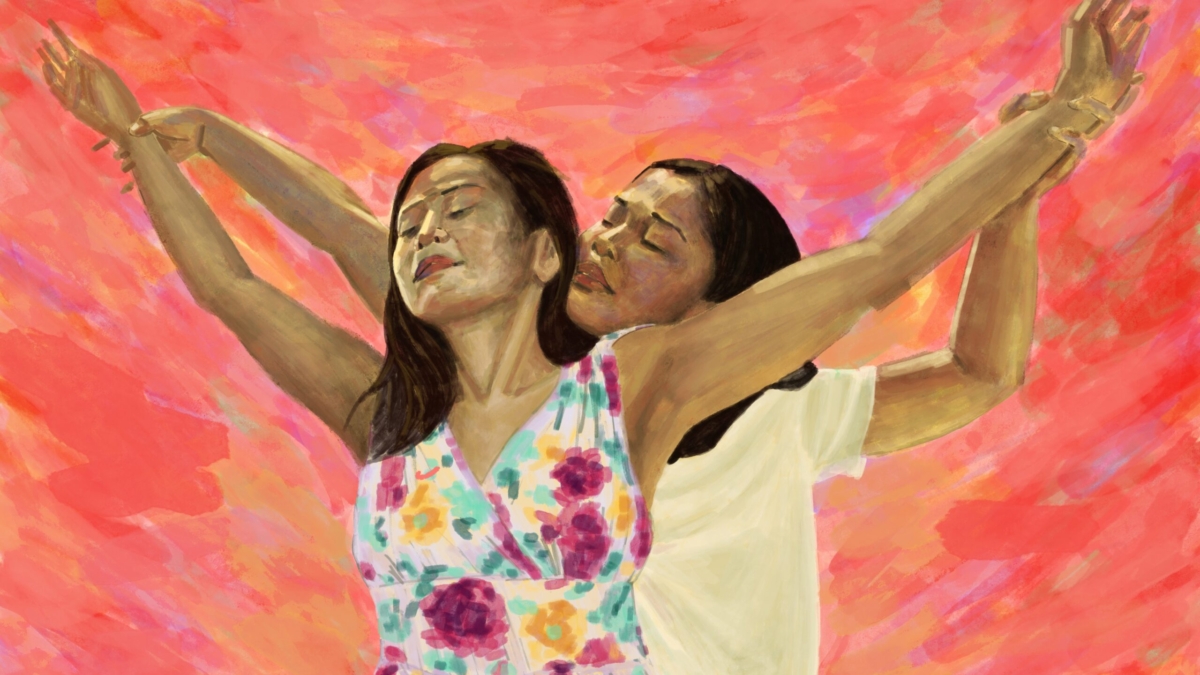An ode to the dignity of overseas Filipino workers in Hong Kong
They dance to celebrate. To remember. To forget. To take up space in a world that demands they give up their individuality in exchange for a meek, submissive existence. In Stefanos Tai’s film, “We Don’t Dance For Nothing,” we are forced to confront the beauty and dignity of Filipino domestic workers in Hong Kong, and everything they dance for.
The first moments of the film reveal the unique way the story is told: In frames that oscillate within the spectrum of still images and fluid motion. We meet our protagonist, H, in the living room of the family for whom she works. Her Ma’am and Sir – the parents of the family – are nowhere to be seen, and she dances with unsuppressed catharsis. In this opening scene, the slowed frame rate captures H at sporadic moments of joy, of desperation, of freedom.

(H. Image Credit: Stefanos Tai/We Don’t Dance for Nothing)
This technique of storytelling, inspired in large part by the 1962 French film “La Jetée,” affects the emotions of each scene in interesting ways. Each frame is beautifully composed, just enough time between moments of stillness and moments of movement. And on top of that, the film’s talented cast of actors paint dynamic, emotional scenes with great virtuosity. With this method, the film gestures towards themes of the subjectivity of memory, themes of captivity, themes of freedom – and any other meanings the audience may use to fill in the gaps.
But in those scenes that make us sit with just one image at a time, we may feel as though we are confined to that moment. Similarly, the characters of the film commonly express some level of feeling trapped. For example, H is on the hook for someone else’s kids, forced to comply with a strict contract, made to live a certain way, and even is threatened with the prospect of no vacation so that she can take care of her Ma’am’s newborn. The way Ma’ams and Sirs treat their domestic workers further strips them of their agency. In Tai’s words: “The world sees them as labor and service. The world looks at them like we look at our Roombas.”
In the same way, her fellow OFW’s (overseas Filipino workers) also have no other recourse but the highly regulated life they must live. H’s friend tells of how she sends her earnings back to her cousin, but after her cousin’s father lost it all gambling, her cousin must also come to Hong Kong to be a domestic worker – there’s just no other way for her to live. There’s no other way for these women to live.
But in the midst of their difficult circumstances, they create moments of freedom. H finds reprieve when she’s dancing, when she’s with Sampa (her “tomboy” love interest), and when she’s trying on her Ma’am’s clothes and acting like she’s the one with the life to live, with places to be. H and her friends assert their existence through their dancing. They don’t dance just for fun; they don’t dance for nothing.

(Director Stefanos Tai. Image Credit: Stefanos Tai)
To varying degrees, everyone feels the way H does – even if they aren’t as forthright with their frustrations. After following H through the whole film, it’s clear how her experiences, emotions, and desires were meant to reflect those of so many other real-life OFWs. When I sat down for a conversation with Tai, the word “dignity” came up often. He wanted to reflect the dignity in OFW’s joys and struggles, in contrast to the way they are commonly seen in everyday life. Tai says her single-letter name shows that her story “isn’t about this one character, it’s about the community.”
What was the hardest part of making this film?
I would say it is, for me, directing creatively while having to think in this very technical and mathematical way. [For example], if you’re shooting six frames per second, you need to have the shutter at 90 degrees. And it’s all on a film camera, so you can’t really see what you’re getting, so you have to trust the math. Worrying about all that technical stuff takes up a lot of the room in my brain and it was hard to do that. Obviously, I had help – it wasn’t just me. But it was hard to keep that stuff in mind and also think about the performance. And the directing of the actors. And the lighting. And the style of it all. And the other thing I would say is that I have never made anything this long. I had never shot for thirty days. All my [previous] shoots were two, three, four, sometimes one day. The thing that kept me going was the sense that these women had trusted me with their stories, and I had to do the best I possibly could, no matter how long it took.
What was the process of gathering stories and researching like?
There was not really a formal start and end to that process. I would say it even continued through editing, and even today, when I go back to it, I try to encourage people that if there is an inaccuracy, something you feel is not authentic, or if there’s some line that I messed up because I don’t speak Tagalog, please tell me. I will change it, it’s not too late. But I would say it was three, four months of intense reading and a lot of Sundays dancing, going to church, eating. It was a lot of eating, which was fun.
Could you talk a bit about the meaning behind H’s name?
What happens to me when I write is I get attached to things, like seeing things on the page, and then I don’t want to change it. Of course if it’s a real issue I’ll change it, but a lot of people were saying for H, isn’t it a bit dehumanizing that she doesn’t have a proper name? But I liked this idea of showing that she could be anyone. It’s not about this one character, it’s about the community.
What did you like most about living in Hong Kong?
I didn’t find my group of friends, and that was a bit tricky at first, but what I did find was this community of thousands of women who were the most inspirational people I’ve ever seen in my entire life. It made me feel like everyone else there, other than the domestic workers, were missing the point of life on Sundays. Just to see them dancing the way they do was something I will never get out of my head.
“We Don’t Dance for Nothing” screened at the 45th Asian American International Film Festival.

